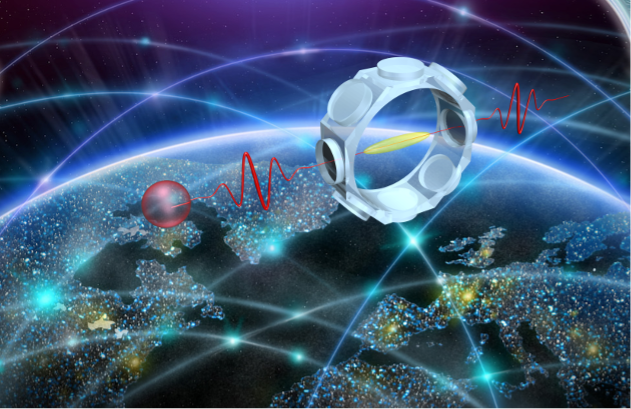
QMemo
Functional optical memories for long-distance quantum communication networks
Project manager
Julien Laurat, Sorbonne Université
Overview
The QMemo project develops quantum memories that will eventually bring together the figures of merit required for their integration into future French and European experimental quantum networks.
Keywords: Nonlinear and quantum optics, memory, quantum networks, multiplexing, cold atoms, doped crystals
In a nutshell
The NV center in diamond consists of a substituted nitrogen atom associated with a vacancy. Among the several hundred or more One of the priorities of the National Quantum Strategy is to develop quantum networks enabling the distribution of entangled states. Extending these networks to long distances requires quantum repeaters, which involve dividing the long distance into shorter segments over which the entanglement can be faithfully distributed. Adjacent segments are then connected.
To realize such architectures, quantum memories are crucial components. They enable asynchronous preparation of the network by storing the entanglement on each segment before making the connections. Repeater deployment has become a central element of quantum network roadmaps in recent years, but requires the development of extremely high-performance quantum memories. Beyond repeaters, these memories have numerous applications in quantum state engineering and optical quantum computing, enabling the synchronization of photonic resources.
The QMemo project is developing quantum memories with the ambition of being integrated into future French and European experimental networks. Storage and reading efficiency, as well as storage and multiplexing times, will be optimized. These devices will be based on two complementary technologies: the first on large arrays of laser-cooled atoms, and the second on nanophotonic structures doped with rare-earth ions.
This project federates the entire French academic community working on quantum memories, and will stimulate the development of various enabling technologies.
Challenges
- To develop quantum memories that will eventually bring together the figures of merit needed to integrate them into future French and European experimental quantum communication networks.
- Two main experimental platforms based on different technologies are currently being developed: cold atoms and earth-rare ion-doped crystals.
Tasks
- WP 1: Development of technologies and methods
- WP 2: Single-mode quantum memories
- WP 3: Multiplexed quantum memories
Consortium
- Grenoble INP
- Institut de Recherche de Chimie Paris (IRCP, Chimie ParisTech-PSL / CNRS)
- Institut Néel (CNRS)
- Sorbonne Université
- Université Côté d’Azur